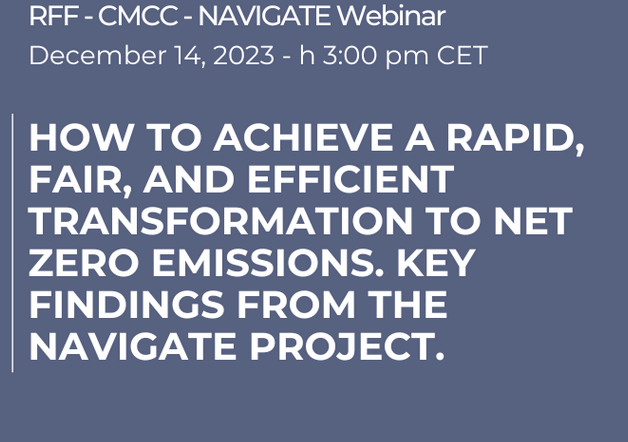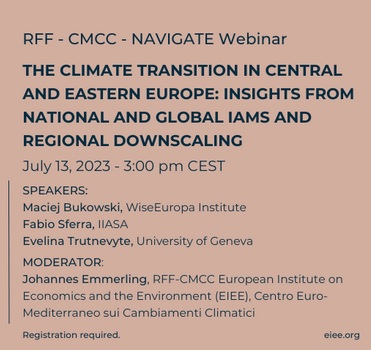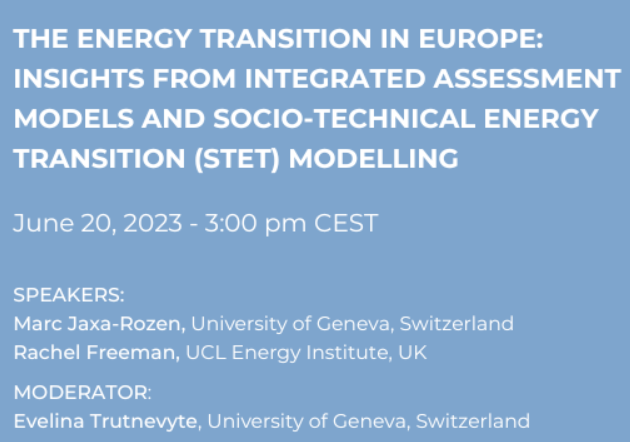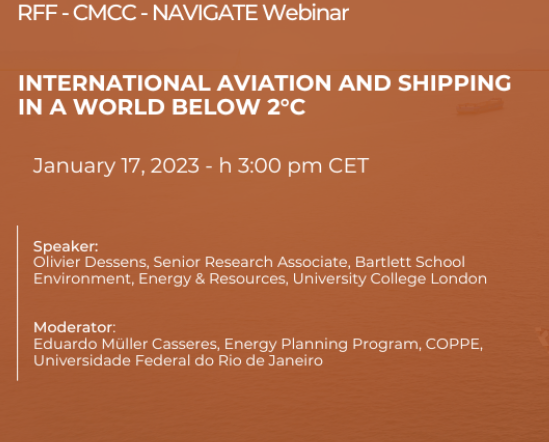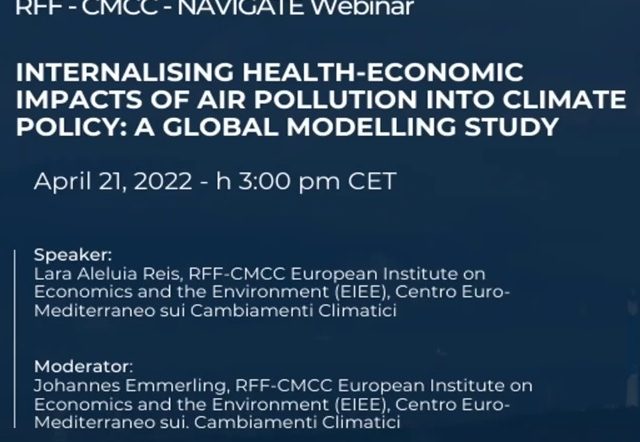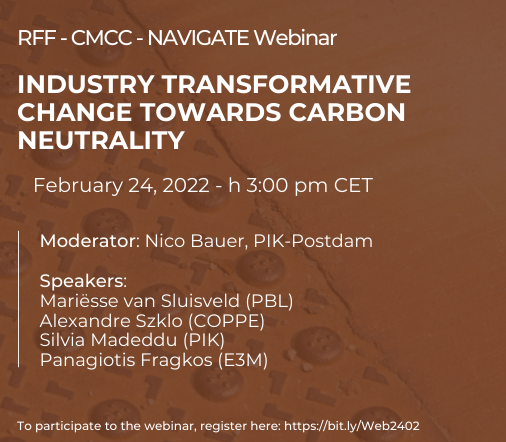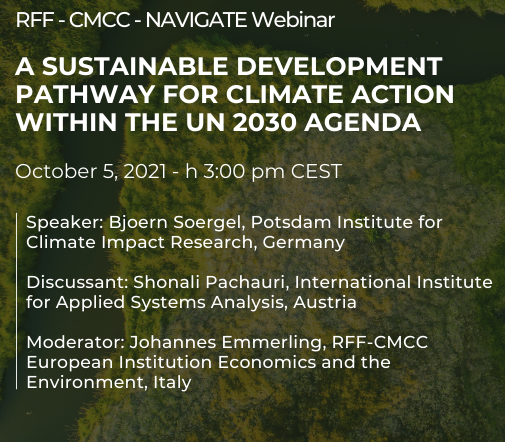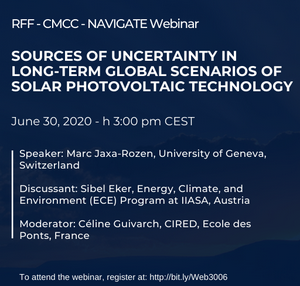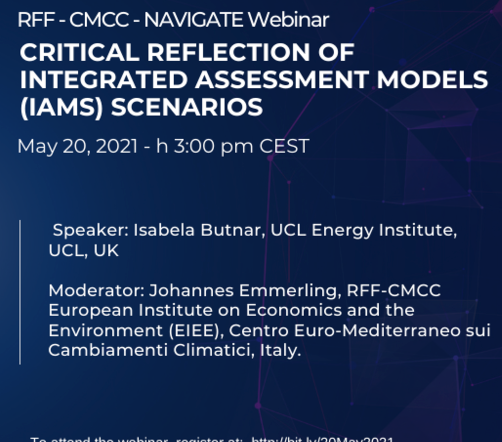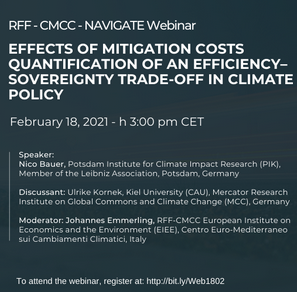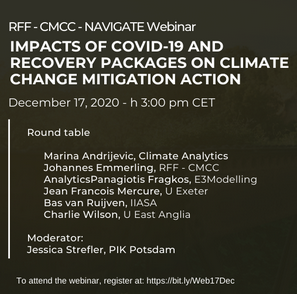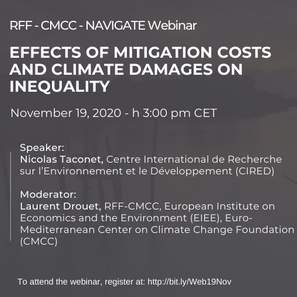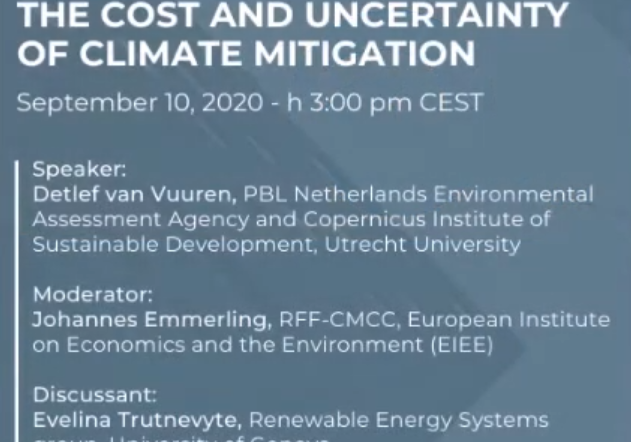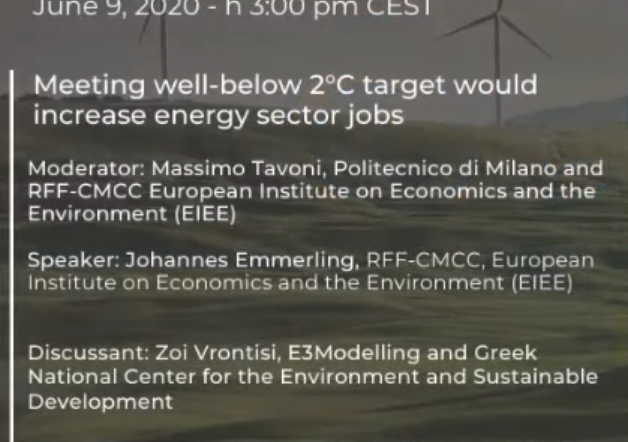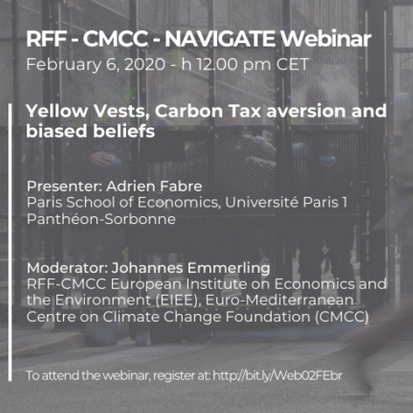Integrated assessment models (IAMs) are simplified representations of complex physical and social systems, focusing on the interaction between economy, society and the environment. IAMs aim to provide policy-relevant insights into global environmental change and sustainable development issues by providing a quantitative description of key processes in the human and earth systems and their interactions. Human societies interact with their natural environment in numerous ways. They extract services and resources, shape the natural environment according to their needs and cause impacts by emissions, disturbance and waste. This can cause severe environmental degradation with possible feedbacks to the human system. Hence, there is a strong need to analyse different development patterns as done in using IAMs. The modelling is integrated, i.e. it uses information from many scientific disciplines and describes both the human and earth system. The term assessment refers to focus on generating useful information for decision-making, even in case of large uncertainties.
IAMs capture human-society interactions by describing them as coupled systems on the relevant geographical and intertemporal scales for policy-making. Often these systems involve the interactions between energy-land-economy and climate. For example, the assessment of strategies to limit global warming is conducted by IAMs with global coverage and a time horizon until the end of the 21st century. To understand future changes in the interaction between human society and the Earth system, and assess available management strategies, IAMs use scenario approaches that describe a range of outcomes under different courses of action and assumptions. Such scenarios are often based on narratives describing how society could develop, a set of trends in socio-economic drivers, policies, and technology developments, and in many cases societal goals to be achieved. IAMs translate such assumptions, trends and goals into quantitative projections. They typically include a description of human activity (e.g. energy and land use), direct drivers of environmental change (e.g. emissions, land use and resource use), resulting impacts (e.g. climate change and consequences for crop yields) and response options. The output of IAMs is a description of human-earth system coupling and development over the course of several decades.
The most common use of IAMs is in the field of climate mitigation. A key purpose of IAMs is to provide orientation knowledge for the deliberation of future climate action strategies by policymakers, civil society and the private sector. This is done by presenting different courses of actions (climate change and climate action pathways) towards a variety of long-term climate outcomes under a broad range of assumptions about future socio-economic, institutional and technological developments. The resulting climate change and climate action pathways can be analysed in terms of their outcomes towards a set of societal goals (such as the SDGs) and the resulting trade-offs between different pathways. Key trade-offs that have been investigated in the IAM literature are, for example, between (i) no, moderate, and ambitious mitigation pathways, (ii) early vs delayed mitigation action, and (iii) pathways with different emphasis on supply-side vs demand-side mitigation measures or more broadly different sustainable development strategies. Key uncertainties that were explored in the IAM literature are between (i) different socio-economic futures as, for example, represented by the Shared Socio-economic Pathways (SSPs), (ii) different technological developments and (iii) different resource potentials.
The literature on IAMs is vast and continues to grow rapidly. It is spread across many disciplines, with publications appearing in a wide range of journals, including those that focus on earth sciences, biological sciences, environmental engineering, economics, sociology, technological change, and other related fields. In the literature, there is some confusion about what IAMs are and for which purpose they have been developed. There exists a broad range of IAMs that differ along four dimensions in particular: their core topic, their level of detail and type of representation, their solution concept (optimization versus simulation), and their temporal and spatial system boundaries (in particular global versus national scope).
- Topic. While by far most IAMs are used for climate mitigation, similar models have also been developed for air pollution, water use and other topics. Moreover, IAMs are increasingly used to analyse sustainable development strategies (e.g. achievements of SDGs).
- Level of detail and type of representation. IAMs include a variety of model types that can be distinguished into two broad classes.
The first class comprises cost-benefit IAMs that fully integrate a stylised socio-economic model with a reduced-form climate model to simultaneously account for the costs of mitigation and the damages of global warming using highly aggregate cost functions derived from more detailed models. In the model context, these functions do not explicitly represent the underlying processes, but map mitigation efforts and climate change to costs. This closed-loop approach between climate and socio-economic systems enables cost-benefit analysis by balancing the cost of mitigation and the benefits of avoided climate damages. They are typically used to assess the social costs of carbon.
The second class of IAMs, called process-based IAMs, focuses on the analysis of transformation processes depending on a broad set of activities that induce emissions as side effects. They describe the interlinkages between economic activity, energy use, land use, and emissions with emission reductions and removals as well as broader sustainable development targets. GHGs and other climate pollutants are caused by a broad range of activities that are driven by socioeconomic developments and also induce broader environmental consequences such as land-use change and air pollution. With few exceptions, these models typically do not close the loop with climate change and damages that affect the economy, but focus on emission scenarios and climate change mitigation pathways. Due to the process-based representations of emission sources and alternatives, it is not only possible to investigate the implications of policies on GHG emissions, but also the trade-offs and synergies with social and environmental sustainability criteria. Process-based IAMs are typically used to provide emission scenarios for future climate change projections and to evaluate efficient mitigation strategies.
- Solution concept. Simulation models are based on the evaluation of the dynamic behavior of a system. They can be used to determine the performance of a system under alternative assumptions.
On the other hand, optimization models seek to maximize or minimize a mathematical objective function under a set of constraints. Most often, the objective function represents the total cost or revenue of a given system or the total welfare of a given society. The set of constraints can be used to represent limitations on the system, such as: constraints on flows, resource and technology availability, labor and financial limitations. Specifically, when modelling climate mitigation responses, limiting carbon budgets is often used to represent future temperature level pathways.
- Temporal and spatial system boundaries. Global IAMs are used to analyze global emissions scenarios extrapolating current trends under a variety of assumptions and climate change action pathways under a variety of global goals. In recent years, a class of national and regional IAMs have emerged to study trends and transformation pathways in a given geography. They typically have higher sectoral, policy and technology resolution than global models and make assumptions about boundary conditions set by global markets and international policy regimes.
Bibliography
- IAMC wiki – The common Integrated Assessment Model (IAM) documentation
https://www.iamcdocumentation.eu/index.php/IAMC_wiki - John Weyant, Some Contributions of Integrated Assessment Models of Global Climate Change, Review of Environmental Economics and Policy: Vol 11, No 1, 2018
https://www.journals.uchicago.edu/doi/full/10.1093/reep/rew018 - Karen Fisher-Vanden, John Weyant, The Evolution of Integrated Assessment: Developing the Next Generation of Use-Inspired Integrated Assessment Tools, Annual Review of Resource Economics, Vol. 12, Issue 1, pp. 471-487, 2020
https://papers.ssrn.com/sol3/papers.cfm?abstract_id=3716727 - Elmar Kriegler, Keywan Riahi, Nils Petermann, Valentina Bosetti, Pantelis Capros, Detlef van Vuuren, Patrick Criqui, Christian Egenhofer, Panagiotis Fragkos, Nils Johnson, Leonidas Paroussos, Assessing Pathways toward Ambitious Climate Targets at the Global and European levels: A Synthesis of Results from the AMPERE Project, Working Papers hal-01866610, HAL 2014.
https://ideas.repec.org/p/hal/wpaper/hal-01866610.html# - IAMs explainer on Senses project: https://climatescenarios.org/primer/energy-land-use-and-emissions/
- IPCC, 2022: Annex III: Scenarios and modelling methods [Guivarch, C., E. Kriegler, J. Portugal-Pereira, V. Bosetti, J. Edmonds, M. Fischedick, P. Havlík, P. Jaramillo, V. Krey, F. Lecocq, A. Lucena, M. Meinshausen, S. Mirasgedis, B. O’Neill, G.P. Peters, J. Rogelj, S. Rose, Y. Saheb, G. Strbac, A. Hammer Strømman, D.P. van Vuuren, N. Zhou (eds)]. In IPCC, 2022: Climate Change 2022: Mitigation of Climate Change. Contribution of Working Group III to the Sixth Assessment Report of the Intergovernmental Panel on Climate Change [P.R. Shukla, J. Skea, R. Slade, A. Al Khourdajie, R. van Diemen, D. McCollum, M. Pathak, S. Some, P. Vyas, R. Fradera, M. Belkacemi, A. Hasija, G. Lisboa, S. Luz, J. Malley, (eds.)]. Cambridge University Press, Cambridge, UK and New York, NY, USA. doi: 10.1017/9781009157926.022






